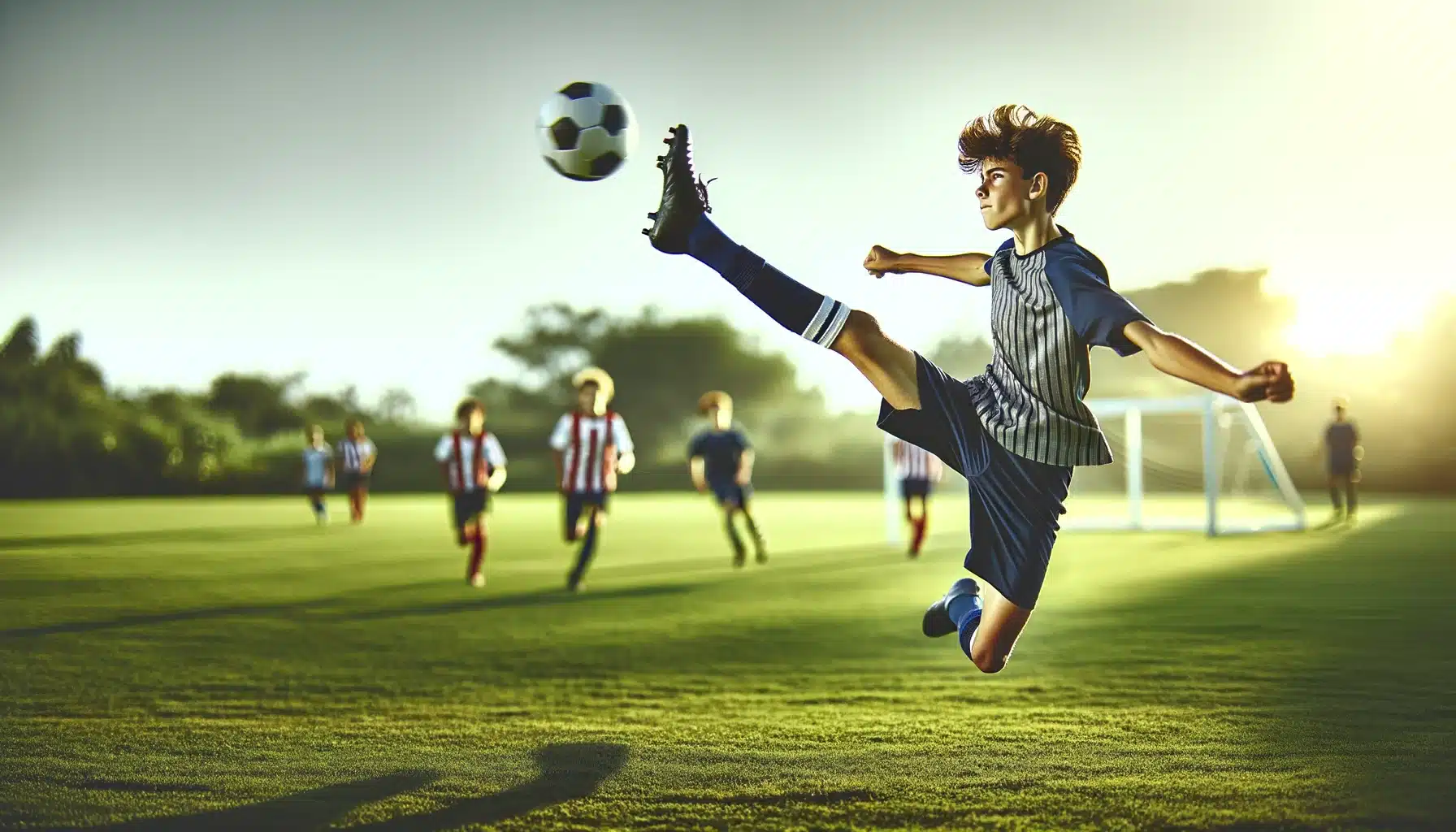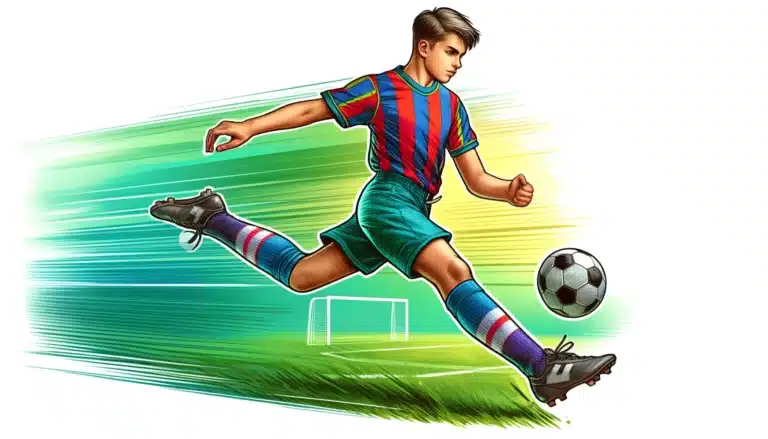What is a High Kick in Soccer?

From bicycle kicks that make highlight reels to dangerous plays that make coaches cringe – mastering the high kick can be the difference between being a hero or getting a red card.
I’m here to clear everything up once and for all…
Quick Takeaways:
- High kicks are legal in soccer unless deemed dangerous by the referee (more on this)
- The decision for penalties depends on control, height, and proximity to other players
- Player safety and situational awareness are crucial for executing high kicks
The difference between a spectacular play and a dangerous foul often comes down to a referee’s split-second judgment of a high kick.
Like a graceful dancer, soccer players must balance athleticism with safety when lifting their feet above waist height.
The Art of the High Kick
Soccer isn’t just about fancy footwork at ground level. High kicks emerge during crucial moments:
- Corner kicks where players stretch to reach that perfect angle
- 50/50 balls when split-second decisions can change the game’s momentum
- Free kicks that require extra power and precision
When Does a High Kick Cross the Line?
A referee considers multiple factors:
- Height relative to nearby opponents
- Player control and technique
- Potential risk to other players
- Game situation and context
As both a parent and coach, I’ve seen my fair share of dramatic reactions to high kicks. Parents often gasp when they see a foot rise above waist level, but I teach my players that it’s all about control and awareness.
The most important lesson? Sometimes the simplest play is the safest play.
Red Card or Play On?
According to most rules in youth soccer leagues, a high kick is legal as long as it is not deemed dangerous.
A high kick is a common foul that occurs when a player raises their foot too high, endangering an opponent. According to the official FIFA Laws of the Game, a high kick is only a foul if it is committed in a careless, reckless, or excessive manner.
This is up to the discretion of the head referee.
Depending on the location of the foul, the result is a direct or indirect free kick.
If a player raises their foot in a controlled manner, without endangering an opponent, it shouldn’t be considered a foul.
The severity of the penalty depends on:
- Intent and recklessness
- Contact with opponents
- Overall danger level of the play
I once had a talented player who could (kind of) execute perfect bicycle kicks in practice. However, he was taught that game situations require different decision-making. That lesson paid off when he chose to chest the ball down instead of attempting a risky high kick in a crowded penalty area.
Smart Play Over Style
High kicks require:
- Quick situational assessment
- Good body control
- Awareness of surrounding players
- Split-second decision making
Nothing races my heart more than seeing my child attempt a high kick in a crowded area. This has taught me to emphasize the importance of smart decision-making over flashy moves during our backyard practice sessions.
When to Go High and When to Hold Back
Experience has taught me that the best players know when to attempt a high kick and when to play it safe. Here are some key scenarios:
Green Light Scenarios ✅
- Clear space around you with no defenders nearby
- Ball dropping perfectly for a controlled volley
- Desperate last-minute attempts when losing
Red Light Scenarios 🛑
- Crowded penalty area during a corner kick
- Multiple players going after the ball
- Poor field conditions affecting player’s balance
Final Thoughts
The best way to avoid getting called for a high kick violation is to go in with your body. This will help avoid severe leg injuries to you or your opponent.
Remember:
- Use your body positioning first
- Assess the risk before attempting high kicks
- Control and awareness are key to safe execution
Your judgment is critical. In the spur of the moment, it’s best to decide if it’s even necessary and, if you think it is, ensure that it’s a controlled kick. Do not go at the ball ninja style!

Written By: SoccerNovo
SoccerNovo is an independent youth soccer media brand built to help parents, players, and coaches better understand the game and the pathways available in U.S. soccer. Our mission is to make youth soccer simpler, clearer, and more accessible for everyone involved in it.
Let’s connect






